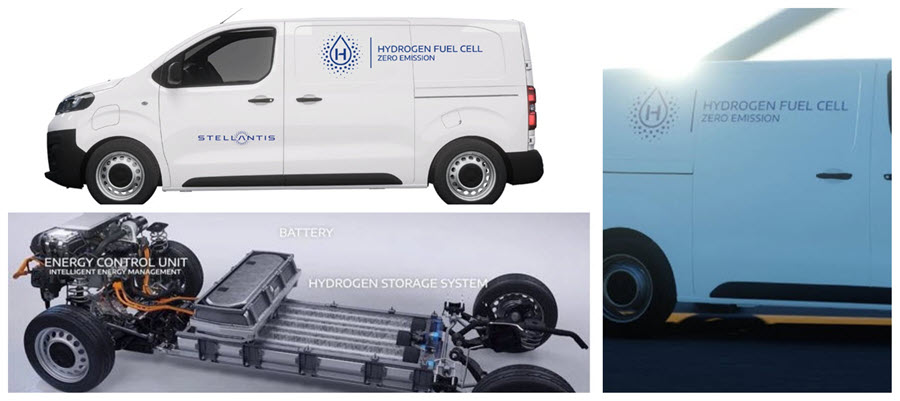
Stellantis plans to work rapidly on fuel cell utilities, according to the firm. By the end of 2021, the former PSA company will begin selling its Peugeot Professional, Citroen Jumpy, and Opel Vivaro Fuel Cell cars, which will be fitted with a hydrogen-powered battery.
The hydrogen fuel cell vans will be sold under the Peugeot, Citroen, and Opel names, according to the company, which was founded earlier this year by the merger of PSA and Fiat Chrysler.
Three high-pressure type IV tanks, each capable of carrying 4.4 kg of hydrogen, will be mounted in the van. These tanks could be refuelled in three minutes and have a range autonomy of over 400 kilometres. A proton exchange membrane (PEM) with a capacity of 45 kW would be used in the fuel cell stack.
Specs
The front-wheel-drive electric motor, which produces 100 kW (136 hp), can also draw power from a 10.5 kWh battery under the seats, which was taken directly from the group’s plug-in hybrid models. This lithium-ion accumulator piques a lot of people’s curiosity. As the driver requires electricity, the 90 kW (122 hp) it can provide compensates for the small fuel cell’s maximum output of 45 kW (61 hp).
Since the latter isn’t well-suited to cold starts, the battery is still in charge for the first few kilometres. Finally, the ability to re-charge this battery on the road and the ability to conserve energy through braking are also benefits. And if there isn’t a hydrogen station nearby, businesses would be able to travel for around fifty kilometres. Given their already small amount, this is reassuring (around 25 in France).
Dr Lars Peter Thiesen, Manager Hydrogen and Fuel Cell Deployment Strategy at Stellantis, said, “For the first time in more than 100 years of automotive development, hydrogen and fuel cell technology has bought us far beyond the automobile. Today, hydrogen is seen as the central element of a future integrated and efficient energy system – free of fossil fuels. As an energy carrier, hydrogen will connect the areas of power generation, heat supply, industry and transportation.”
400 km of autonomy and a refueling in 3 min
Stellantis said its vans will have a range of around 400 kilometres (249 miles) and can refuel with hydrogen in just three minutes.
Stellantis is an international automobile company based in Amsterdam, the Netherlands. In January 2021, it was created by the 50/50 cross-border merger of Italian-American company FCA (Fiat-Chrysler) and French company Groupe PSA (Peugeot-Citroen, Opel).
Stellantis’ plug-in fuel cell electric LCV will be manufactured at Opel Special Vehicles (OSV) in Riisselsheim, Germany, which is also home to Stellantis’ global Centre of Competence Hydrogen & Fuel Cells.
Hydrogen Storage Systems by Faurecia
In Bavans, France, Faurecia will produce, manufacture, and assemble hydrogen storage systems. Faurecia and Michelin have formed a joint venture called Symbio. It creates a Stellantis-specific compact, light-weight fuel cell system capable of delivering 45kW gross power. These devices will be manufactured in France, at Symbio’s Venissieux facility and, beginning in 2023, at the company’s new St Fons factory.
Read the most up to date Fuel Cell and Hydrogen Industry news at FuelCellsWorks




